Sweet pepper is a well-known vegetable culture with a high content of useful vitamins and trace elements. How to grow sweet peppers on his site? What variety to choose? When to plant sweet peppers? How to grow seedlings? How to increase the yield of culture? Given the demandingness of the plant, there are many questions on its cultivation.
In this selection of the material presents a phased technology of sowing, landing and leaving the plant. A description of the most popular and recommended, specialists, varieties of pepper, will help determine the choice.
Sweet pepper, description
Sweet pepper is an annual herbaceous plant, refers to the form "Podpovkin pepper" and the family "Parenic".
A known agricultural culture is grown in moderate, tropical and subtropical latitudes of all continents. The birthplace of the plant is America.
It is warm and moisthed vegetable vegetable plant fruits with delicious and nutritional fruits.
The fruit of pepper looks like a juicy hollow berry with numerous seeds. The color of fruits varies from red, yellow, orange, green and white to brown or purple. The size and shape of the berries also differ, depending on the grade of pepper.
The semi-respected stem and a powerful branched root system allow you to hold a large number of ripe large fruits on the plant at the same time. The low bush, with simple and short-flower leaves, green, became popular thanks to the useful and fragrant fruits.
High content valuable for humans, vitamins, trace elements and organic acids brought sweet pepper into the rank of the most popular vegetable crops.
In the world, a huge number of varieties of sweet peppers are derived and cultivated. In our country, the most common zerotype is the pepper Bulgarian.
Sweet pepper varieties
Successful cultivation of sweet pepper largely depends on the well-selected variety. Given the main varietal characteristics of vegetable culture: the timing of ripening, the size and shape of the fruits, the preferences of the culture in certain climatic conditions, it is important to choose the most appropriate, varieties of pepper.
Consider the most popular and productive varieties.
- "Tusk"
Early, tall grade (up to 160 cm high), has sweet and fragrant fruits of red. Fruits elongated cylindrical shape. Pepper is suitable for growing in the greenhouse and in the open soil.
- "Agapovsky"
It is characterized by the average dates of ripening and growing in greenhouse conditions. A bush is compact, with cuboid fruits of red.
- "Bogatyr"
Mid-line variety, with large (according to the name) with red and juicy fruits.
- "Apricot Favorite"
Cone-shaped, smooth, orange fruits mature early. Compact low (up to 50 cm) The bush is suitable for cultivation in a closed and open soil.
- "Big Daddy"
Early maturing, Low-growing varieties with thick fleshy, purple color, fruit. Universal on the landing place (outdoor or greenhouse soil) grade.
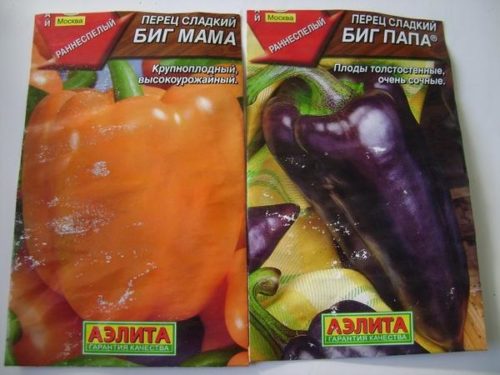
- "Yellow bell"
Characterized by yellow fruits cuboid shape and early deadlines ripening (about 70 days).
- Hybrid F1 «white Star of the East"
Powerful shrub, with large whitish-cream and fruit ripening earlier periods.
- Hybrid F1 «Star of the East Chocolate"
Semi-spreading bush with large prismatic shape and brown color, juicy fruit. Characterized by average ripening times.
- "Gladiator"
Dutch grade, large and fleshy (wall thickness 10-13 mm) yellow pepper. It has a middle-ripening.
- "Medal"
Early maturing variety, with a prolonged period of fruiting. Fruit - large, thick-walled (10-12 mm), the bright red color.
- "Yaw"
Precocious and undemanding variety, is characterized by high yield and large fruits.
- "Victoria"
Fruit - cone-shaped, slaborebristye, medium size. The variety is medium early.
- "Brooch
The variety has early ripening times, resistant to diseases. Scrub - not high, with the orange-red thin wall (5 mm) fruits.
- "Bogdan"
Sort fruiting long period, with a light orange thick-walled, large and aromatic fruits. The weight of one peppercorn about 200-250 grams.
- "Golden Pheasant"
High-yielding varieties with yellow fruit, a pronounced sweet taste. Peppercorn large (up to 300 c) and thick-walled.
- "Belozerka"
Low bush, thickly plastered with yellow and red conical pepper.
- "Gingerbread Man"
Characterized by a rounded shape and thick walls, fruit, red. It has excellent taste.
- "Alba"
High yielding variety, with fruits tupokonicheskoy form and medium in size. Peppercorn thick, juicy, orange shades.
- "Sun"
Variety with large fruits and yellow, has a good taste and technological qualities.
You can also highlight the variety of characteristics taken separately. For example:
- Varieties of sweet peppers, with a pronounced sweet taste (Swallow, Winnie the Pooh, Tenderness, Maikop 470).
- Varieties resistant to diseases, pests and hot climate (Ararat, Terek, Adler, Erivan, Kazbek).
- Varieties for cultivation in the open field (Etude, karate, fun).
- Grades for growing sill (Watercolor, Sugar, tomboy Yarik, foxy, Treasure Island).
- Varieties for growing in a greenhouse (Orange miracle Alenka, Winnie the Pooh, Tenderness, Swallow, California miracle).
- Varieties distinguished by thick-walled and large fruits (California miracle, gladiator, Winnie Pooh, a gift of Moldova).
- Preservation varieties (merchant, Victoria, Ermak).
- Early sweet pepper varieties (Lumin, Avengo, Triton, Alantic F1).

Best sweet pepper,according to agronomists and gardeners, early and secondary varieties are recognized: Eroska, Funtik, Hercules, Fakir, Chardas, Jung, Chord, Viking, Claudio, Cornet, Atlant, Big Pope, Lyedie, Smile. According to reviewsThese varieties of sweet peppers have proven themselves as hardy, high-yielding cultures, with high taste and technological qualities.
In any case, choosing a variety for landing on its plot, first it is better to familiarize yourself with its characteristics and suitability for a specific climate zone.
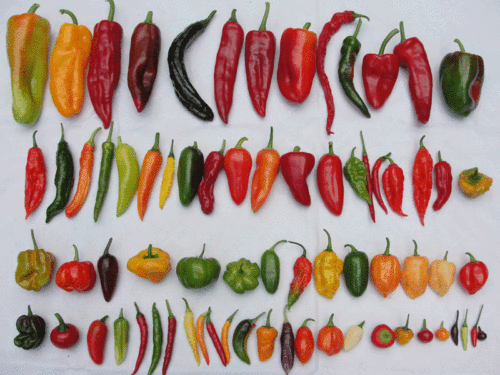
Growing sweet pepper
The light and thermal-loving plant, pepper grows perfectly in the open soil of southern regions, with a warm and mild climate. In the zone of the middle strip of Russia, the culture, mainly grown in greenhouses and greenhouses.
Sweet pepper has a long season of vegetation. Therefore, for the successful formation and aging of fruits, the peppers planted into an open ground, ready-made sprouting.
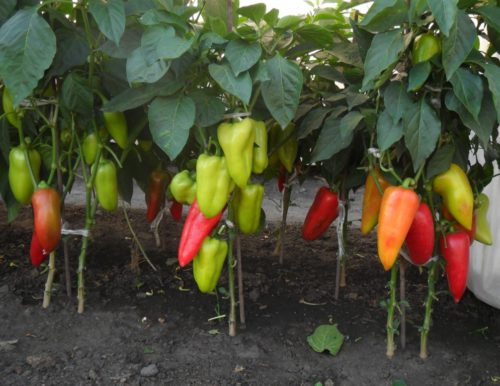
Sweet Pepper Creation Technology
The process of planting sweet pepper to seedlings includes several main stages:
- preparation of seeds to crop;
- sowing seeds in the container;
- care of seedlings;
- planting seedlings into separate glasses;
- looking seedlings in open ground.
Consider in more detail all the above stages growing seedlings of sweet pepper.

Preparation of sweet seeds before sowing
- To begin with, you need to select the strongest and viable instances from the total mass of seeds. Paving all seeds into a container with salted water, only the "drowned" seeds leave.
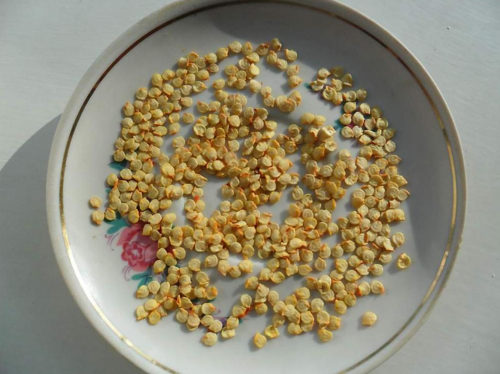
- Selected seeds of sweet pepper are disinfected (20-30 minutes) in a weak solution of manganese, after which they are washed.
- To improve the germination, practice seeds for 12 hours in the growth stimulator.
- Even without additional stimulation of growth, the seeds need to withstand in a wet state (on a damp cloth or a rut) about 2 days. This procedure will allow the seed faster to germinate in the soil.
Sowing Sweet Pepper Seeds
- Timing seed seeds for seedlings vary from the end of January and before March.
- Seeds are planted into a single container, making a pencil or a stick, not deep (1-2 cm) the grooves with a seed of 5-6 cm. The distance between the seeds is about 2 cm. Practice also "solid" sowing over the entire surface, without rows.
- Come and immediately in individual cups, for example, peat pots, with a diameter of about 10 cm.
The opinions of practitioners on this expense were divided. Some believe that for a single large capacity to care is easier and easier, and after germination, seeds it is more convenient to choose the strongest and healthy sprouts, which are then transplanted separately. Others argue that the pepper does not tolerate the transplant, so it is better to immediately sow in one-time cups. And if you replant - do it very carefully and correctly, not traumating the roots of seedlings.
- Soil in the container should be light and loose. Soil consists of humus, sand and turf. To create a more nutrient medium, 1 toss is added to 1 kg of the mixture. Wood ash.
- After sowing, the seeds sprinkle the earth, slightly seal and covered with a film to create a greenhouse effect. Capacity with seeds are placed in a warm place for subsequent germination.
- During this period, regular ventilation and watering landed seeds.
- After 1-2 weeks, the first pepper shoots appear. At the same time, the film must be removed immediately.
Care of sweet pepper seedlings
- The temperature of the room in which the seedlings germinate should be about + 22-25 ° C.
- In order for shoots to have enough sunlight, the container put on the windowsill. In cloudy weather, in the morning and in the evening, you need to hear the shoots of a luminescent lamp. Normally, the plant should receive light from 8.00 to 20.00. When lacking lighting, there is a yellowing and foaming of leaves.
- As the soil dries, it is provided with water, indoor or, slight warm, temperature. It is important to ensure a moderate watering, not allowing neither soil drying or moisture stagnation. Excessive moisturizing seedlings can lead to a black leg. Seeders are favorable for spraying (from the sprayer) of leaves with water.
- After checking the room, seedlings are better removed from the windowsill, because They do not like drafts.
Sweet pepper seedling in separate glasses
- With the appearance of two real leaves on a young plant (not counting the seedlines), seedlings transplanted into individual cups or pots.
- Previously, the container soil is moistened with water.
- When transplanting, neatly approaching the sprout, keeping the ground near the root, the seedfoot is planted into a separate container. This event will provide the best survival rate of the seedlings.
- The main (long) root in the transplantation is better pinned, about 1 cm, to stimulate the development of lateral roots.
- The seedswoman is placed in a glass with soil, poured soil to the level of seedy leaves and watered.
- During the appearance of 2-3 hours, the first feeding of seedlings is carried out. To do this, take 0.5 g of ammonia nitrate, 1 g of potassium-containing fertilizers, 3 g of superphosphate and dissolve everything in 1 liter of water.
- The next feeding is carried out in about 2 weeks with a double fertilizer dose.
- The last introduction of fertilizers falls for the period before planning seedlings (2-3 days) to the street. Dose again doubles.
- Many gardeners recommend, per day before the seedling landing, spray it with a solution of a natural growth stimulator. The plant will be more enduring, resistant to diseases and will show high fruiting results.
Sweet pepper seedling sites in open ground
- At a permanent place, seedlings of thermo-loving sweet pepper sit only in May Month (aged 90-100 days). Plant by this time, has about 10 leaves. Seedling, landed on the site in the first half of the month, is covered with film, in order to avoid frozen. If, the pepper landed in the second half of May, no additional shelter is needed.
- Before planting seedlings (1.5-2 weeks) in open ground, conduct it hardening. For this, in good weather, seedlings periodically exhibit on the street (balcony), gradually increasing the exposure time. At night, seedlings are necessarily listed.
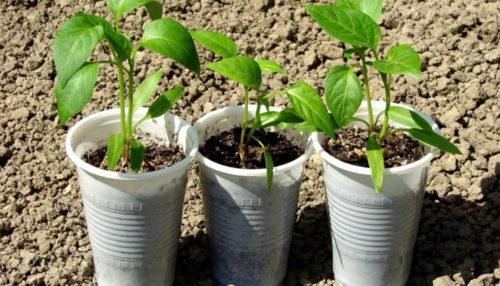
Sweet pepper for greenhouses
- Seedlings for planting pepper to the greenhouse are grown by the method described above.
- Soil in greenhouse, before planting, fertility with organic and mineral fertilizers.
- Plant seedlings for greenhouses at an earlier age (50-60 days), at a distance of about 40-50 cm between seedlings and centered at 60-70 cm.
- The peppers plant in the soil the greenhouses along with a lump of the ground from the cup where the seedlings grew. The procedure is done neatly, avoiding transplant stress for the plant.
- After landing, the seedlings are abundantly watered, the soil is mulched.
Planting sweet peppers
Pepper landing is carried out in the process of disemboditating germinated and tempered seedlings.
Seeding seeds in open ground is not appropriate, even in warm, southern areas. The plant will develop more slowly, and the crops will not be large.
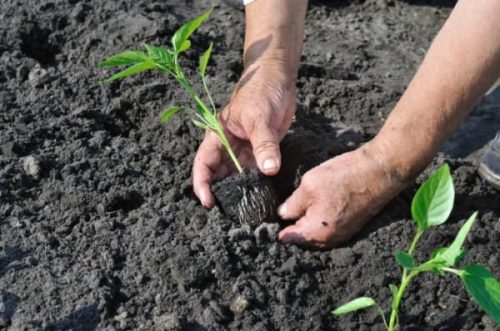
Choosing a place to land a sweet pepper
- Place for planting sweet peppers into open primer should be open, sunny and mad.
- The soil for sweet peppers should be light, nutritious and loose, with good aeration. In dense soil you need to add straw, peat, sawdust, humus. Scarce soils need to be supported by organic, potash and phosphate mineral fertilizers. Sour soils should be made.
- The predecessors of pepper on the site can be any vegetable crops (onions, cucumber), except for the representatives of the grained (tomato, potatoes).
- Pepper is susceptible to resellers, so the other varieties of pepper or bitter pepper should not land.
Sweet pepper landing agricultural
- For landing, it is prepared by the wells, about 30x50 cm. In one hole, in different ends, you can plant two plants at once, then the sizes of the fossa and aisle are slightly increased.
- There are approximately 30-40 cm between the holes, between the rows - 40-50 cm. Often, to save space, the landing is practiced in a checker order.
- Landing is better to exercise in the evening.
- Water poured into the hole, after she absorbed - planted seedlings.
- The seedling falls asleep to the level of the cervix.
Sweet pepper, care
Pepper sweet - demanding of the care and high-quality composition of the soil, vegetable culture. To achieve maximum yields, you need to perform all agrotechnical techniques for plant care: watering, loosening, feeding and pest control.
In addition to the main events, the central flower is pumped on the plant, which allows to significantly increase the yield of sweet pepper.
In addition, steaming is carried out in hot wet weather, removing the side steps, and the lower leaves.
Watering
- Watering is carried out regularly, as the soil drying.
- Watering pepper needs often, but gradually.
- Excessive moisturizing, as well as the drying of the soil leads to falling out the fruit of pepper fruit.
- For watering it is better to use warm water.
- Excellent results showing drip irrigation beds with pepper.
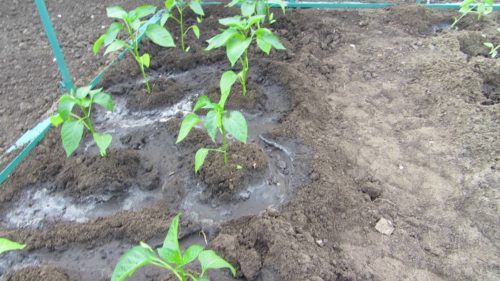
Loosening and mulching
- To avoid soil drying, the beds are mounted peat or sawdust.
- After irrigation, if the site is not closed, it is necessary to carry out shallow soil loosening (given the surface root system of the plant).

Making fertilizers
- Recommend the introduction of feeding (2-3 times) during the growing season of the plant.
- The first feeding is usually nitrogen. You can use nitrogen-containing fertilizers or liquid manure (12: 1). It is impossible to exceed the norms of fertilizer. The overaction of nitrogen will negatively affect the process of fruiting culture.
- Before starting the bootonization, potash-phosphoric fertilizers contribute.
- After flowering, during the start of fruiting, superphosphates and wood ashes are added.
- Sweet pepper perfectly responds to the introduction of liquid feeding of organic fertilizers.
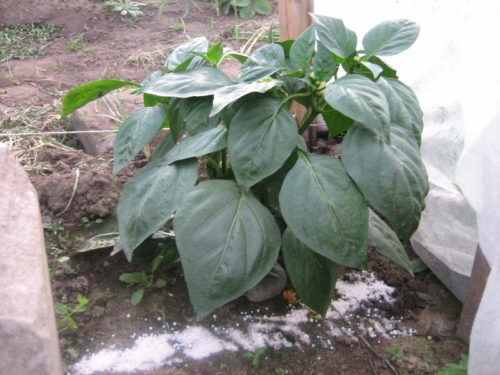
Fighting pests and diseases of sweet pepper
- The fungal disease "black leg" appears with incorrect care of pepper and infection of the soil layer: with excessive moisture, use for watering cold water, landing on places with constant drafts or dense clay soils. The sign of the disease is blackened, at the base, stem. In the case of infection, the upper layer of the soil is cleaned, and the area is disinfected with a weak solution of chlorine lime.
- The prevention of the disease "phytoofluorosis" is disinfection of seeds in the solution of manganese. Signs of the disease - the appearance of brown spots on the stem and leaves. Infected plants spray with anonymous husk or burgundy liquid.
- To, sweet pepper has not become infected with "black bacterial spotting", all plant residues are assembled and burned. Seeds, pre-disinfect.
- When attacking the Tly or a web tick helps spraying of tincture of garlic, wormwood or pizzy.
- The fight against bear and slugs comes down to the use of special chemicals or traps.
Sweet pepper garter
- Tall varieties of sweet pepper need a garter and the formation of a bush (leave 2-3 main stems).
- Already when landing seedlings, you can install support near the bush and tie the stem.

Harvesting sweet pepper
- Collect both ripe fruit and still unripe (greenish color).
- The misappropriate fruits are folded into the drawers for ripening at room temperature. This will provide better ripening remaining on a bush, young fruits.
- When harvesting, the fruit is cut off, and do not get out, so as not to damage the branches and the stalks of the bush.
- Of the first, large and mature fruits, you can collect seeds for sowing the next year.
Thus, observing the basic rules for planting and leaving the plant, each gardener, including a beginner, can easily grow sweet pepper on his site.
Well, and the indisputable benefits and the high nutritional value of this vegetable culture will be an additional incentive of independent cultivation of pepper.

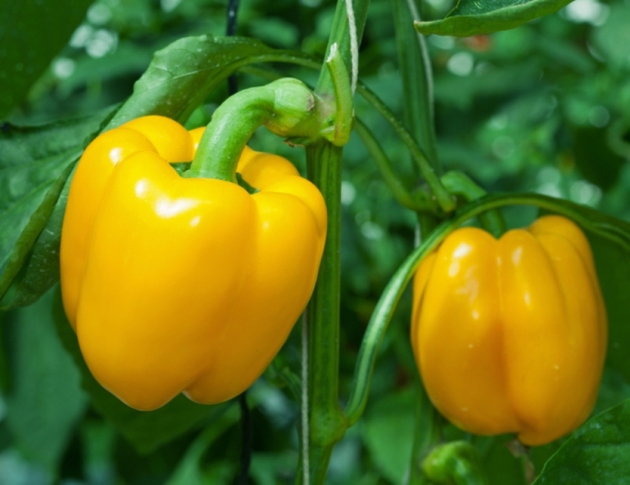
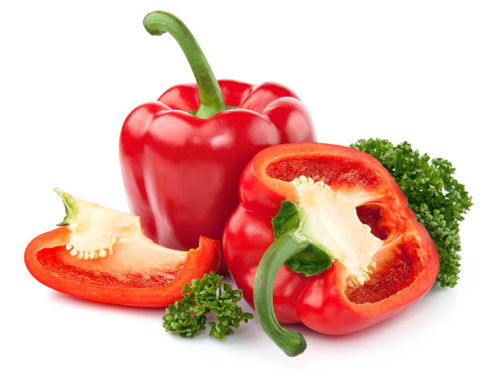
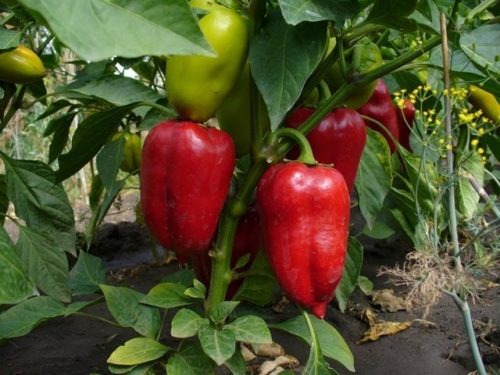
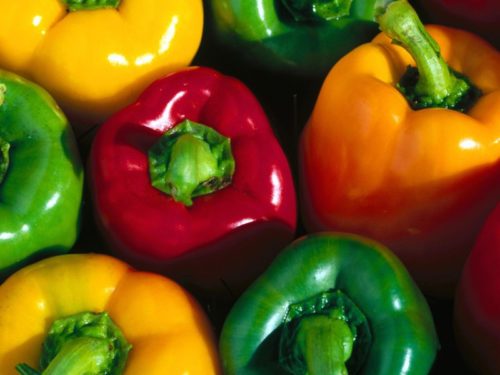
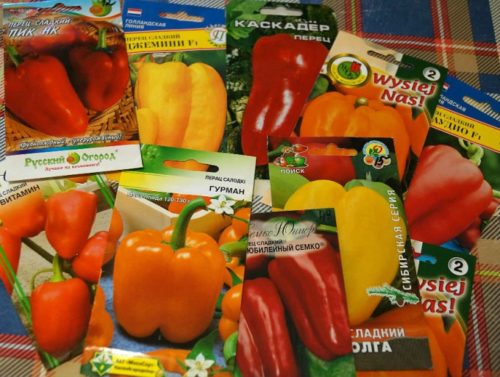
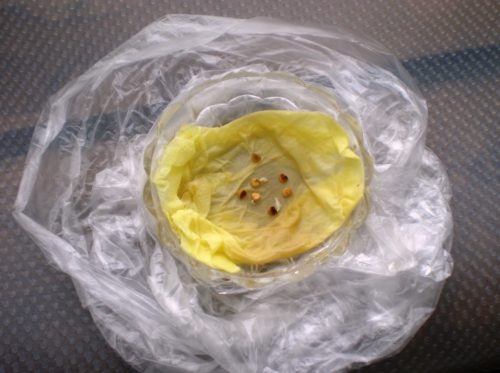
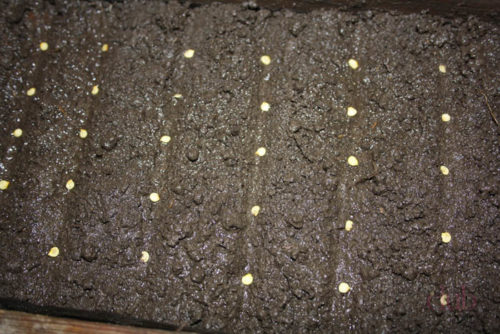
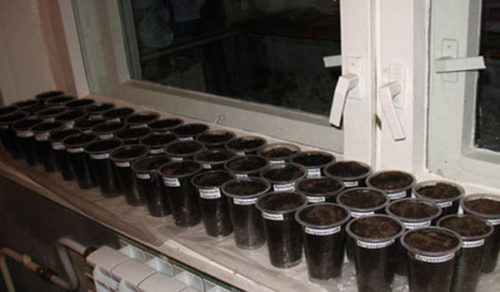
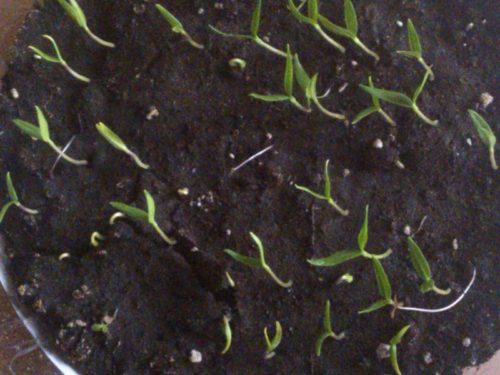
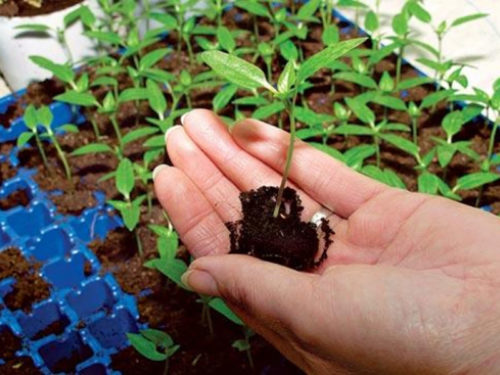

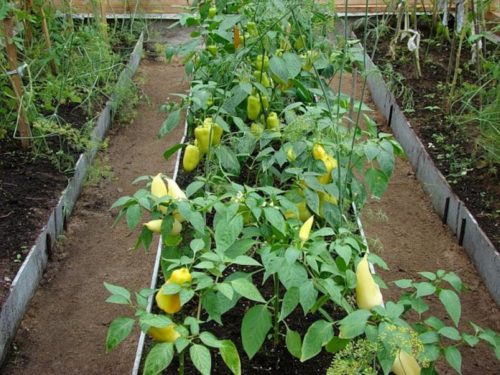
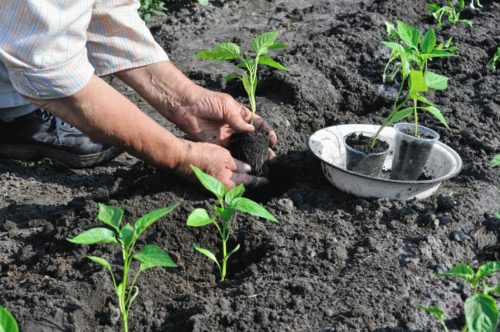
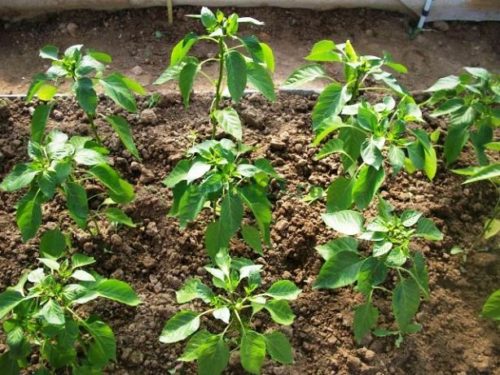
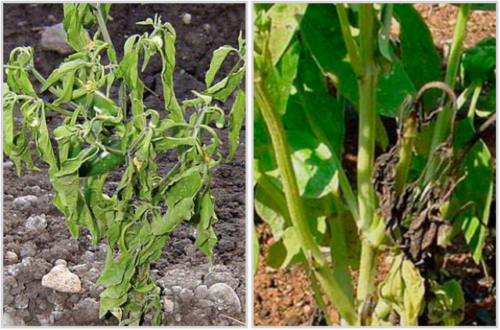
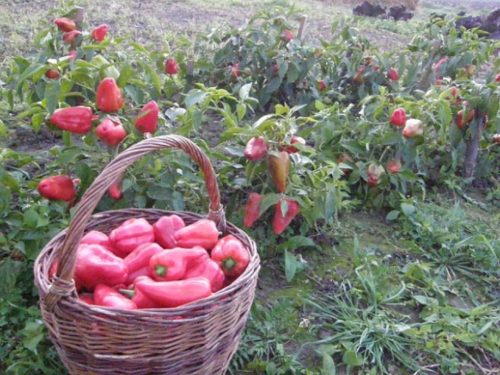
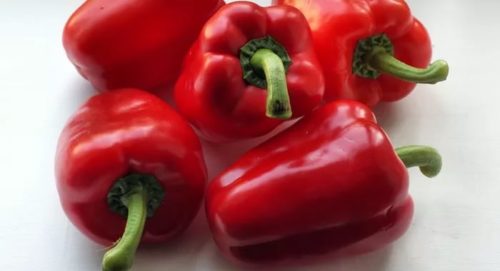
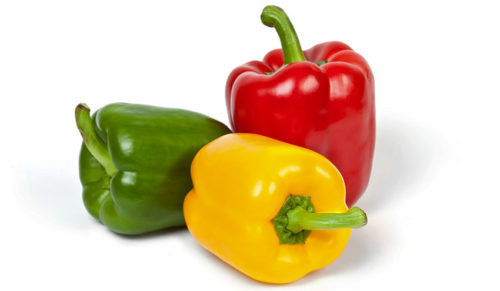
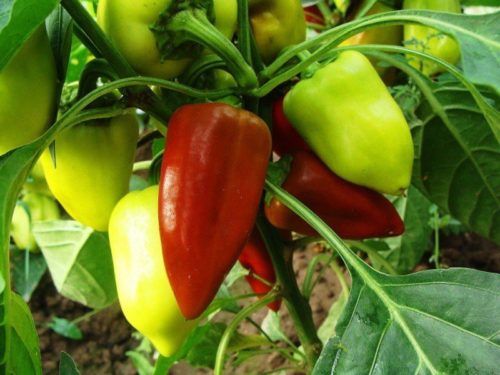
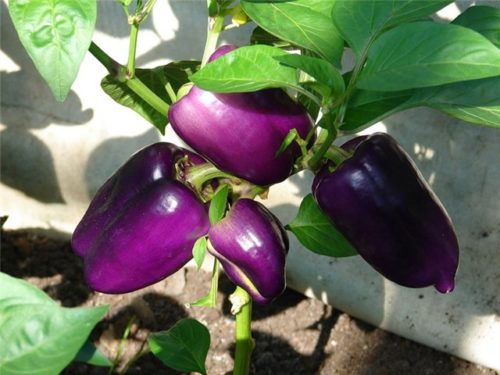
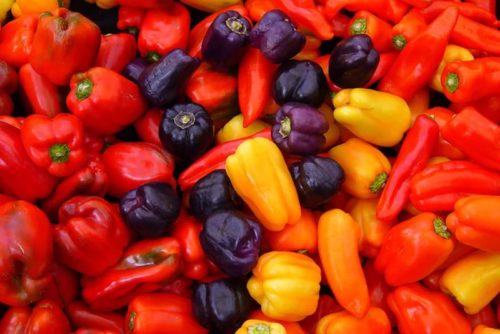
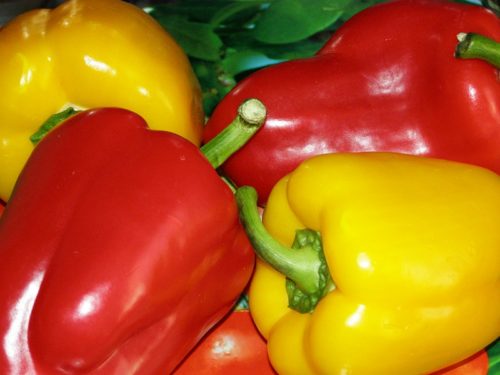












 Start a discussion ...
Start a discussion ...